Baja Med cuisine, a unique fusion of Mexican, Mediterranean, and Asian flavors, has emerged as an exciting culinary trend in recent years. This innovative style of cooking originated in Baja California, Mexico’s northwestern peninsula, where it blends traditional Mexican ingredients with techniques and influences from other world cuisines. One notable example is the case of Chef Miguel Angel Guerrero who seamlessly combines his knowledge of Mexican cuisine with Mediterranean and Asian flavors to create dishes that are both familiar yet unexpectedly harmonious.
The regional variations within Baja Med cuisine showcase the diverse cultural influences that have shaped Mexican gastronomy over centuries. From Ensenada to Tijuana, each city offers its own distinct take on this burgeoning culinary movement. For instance, in Ensenada, seafood takes center stage due to the region’s proximity to the ocean. Fresh fish and shellfish are often paired with vibrant citrus fruits and aromatic herbs to create light yet flavorful dishes that capture the essence of coastal living. On the other hand, Tijuana draws inspiration from its cosmopolitan atmosphere by incorporating global ingredients like olive oil and balsamic vinegar into traditional Mexican recipes. The result is a captivating blend of flavors that embodies the spirit of innovation and experimentation synonymous with Baja Med cuisine.
Baja Med Cuisine: An Overview
Baja Med Cuisine: An Overview
Imagine yourself sitting at a charming seaside restaurant in Ensenada, Baja California, Mexico. As you peruse the menu, your eyes are immediately drawn to an intriguing dish called “Camaron con Chorizo Risotto.” This unique combination of shrimp and chorizo served over creamy risotto is just one example of the innovative culinary creations found in Baja Med cuisine. In this first section, we will provide an overview of Baja Med cuisine by exploring its origins, key characteristics, and regional varieties.
Originating in the late 1990s, Baja Med cuisine emerged as a fusion of Mexican flavors with Mediterranean influences. Spearheaded by renowned chefs such as Miguel Angel Guerrero and Javier Plascencia, this culinary movement sought to bring together traditional ingredients from both regions to create a harmonious blend of flavors. Drawing inspiration from the abundance of fresh seafood available along the coastlines of Baja California and incorporating elements of Spanish and Italian cuisines, these visionary chefs began redefining Mexican gastronomy.
Key characteristics that define Baja Med cuisine include the use of local and seasonal ingredients, emphasis on simplicity and freshness, incorporation of olive oil instead of lard or vegetable oil commonly used in other Mexican regional cuisines, and a focus on healthy eating without compromising flavor. The marriage of contrasting textures and flavors creates a sensory experience that tantalizes taste buds—sweet mango balancing tangy lime; spicy chili peppers complementing rich avocado; tender meat infused with aromatic herbs.
To evoke an emotional response in our audience:
- Immerse yourself in vibrant colors bursting from each plate.
- Savor every bite as layers of flavors dance across your palate.
- Feel the warmth radiating from dishes prepared with love and passion.
- Experience pure delight, as tradition meets innovation on your plate.
In addition to these signposts that transport us into the world of Baja Med cuisine, a table showcasing the regional varieties further enhances our understanding and appreciation:
| Region | Signature Dish | Notable Ingredients |
|---|---|---|
| Ensenada | Camaron con Chorizo Risotto | Shrimp, chorizo, risotto |
| Tijuana | Carne Asada Fries | Grilled beef, French fries, guacamole |
| Mexicali | Chinese-Mexican Fusion | Soy sauce-infused dishes with Mexican ingredients such as tortillas and beans |
| Valle de Guadalupe | Wine-Marinated Lamb Barbacoa | Lamb marinated in local wine, slow-cooked until tender |
In conclusion to this overview of Baja Med cuisine, its distinctive characteristics and regional variations have catapulted it onto the global gastronomic stage. In the subsequent section, we will delve deeper into how Mexican flavors seamlessly blend with Mediterranean influences to create unique and innovative culinary experiences.
[The Fusion of Mexican and Mediterranean Influences]
The Fusion of Mexican and Mediterranean Influences
Baja Med Cuisine: Regional Varieties in Mexican Food
Building on the foundation of Baja Med Cuisine, this section will explore the various regional varieties within Mexican food. By delving into specific examples and highlighting their unique characteristics, we can gain a deeper understanding of the diverse culinary landscape that exists across Mexico.
To illustrate this point, let us consider Oaxacan cuisine—a prime example of regional variety. Known for its complex flavors and rich cultural heritage, Oaxacan cuisine showcases indigenous ingredients such as chocolate, mole sauces, and mezcal. The fusion of pre-Hispanic traditions with Spanish influences has resulted in an array of distinctive dishes like tlayudas (large tortillas topped with beans, cheese, and meat) and chapulines (toasted grasshoppers).
When examining regional varieties within Mexican food, it is important to acknowledge the wide range of ingredients utilized. These ingredients play a significant role in shaping both the flavor profile and cultural significance of each dish. Some key points to note include:
- The use of corn as a staple ingredient across many regions highlights its importance in Mexican cuisine.
- Coastal areas often incorporate seafood prominently due to their proximity to abundant marine resources.
- Indigenous fruits and vegetables contribute to the vibrant colors and fresh flavors found in traditional recipes.
- Different types of chilies are employed throughout Mexico, enhancing heat levels and adding complexity to dishes.
By exploring these distinct elements through a three-column table format, one can better grasp the diversity present within Mexican cuisine:
| Region | Signature Dish | Key Ingredients |
|---|---|---|
| Yucatan | Cochinita Pibil | Achiote paste, bitter orange juice |
| Veracruz | Huachinango a la Veracruzana | Tomatoes, olives, capers |
| Puebla | Mole Poblano | Chocolate , mulato chilies, sesame seeds |
| Jalisco | Birria | Guajillo chilies, marinated meat |
As we continue to explore the regional varieties within Mexican food, it becomes evident that each region boasts its own unique culinary traditions. The diverse range of ingredients and flavors showcases the richness and complexity of Mexican cuisine.
Transitioning into the subsequent section on “Key Ingredients in Baja Med Cuisine,” we can begin to unravel the specific components that contribute to this distinct fusion of Mexican and Mediterranean influences.
Key Ingredients in Baja Med Cuisine
Regional Varieties in Baja Med Cuisine
Building upon the fusion of Mexican and Mediterranean influences, Baja Med cuisine showcases a wide array of regional variations that add depth and complexity to this unique culinary style. To illustrate these regional varieties, let us consider the case of Ensenada, a coastal city located in Baja California, Mexico.
Ensenada is renowned for its fresh seafood offerings, which play an integral role in shaping the local interpretation of Baja Med cuisine. The combination of Mediterranean ingredients such as olive oil, capers, and herbs with traditional Mexican flavors creates a tantalizing blend that appeals to both locals and tourists alike.
To further explore the regional nuances within Baja Med cuisine, we can examine four key elements:
- Seafood: With its proximity to the Pacific Ocean, Ensenada boasts an abundance of fish and shellfish options. From succulent shrimp ceviche to grilled octopus tacos, seafood takes center stage in many Ensenadan dishes.
- Wine: Ensenada’s wine region has gained worldwide recognition for producing exceptional varietals. Local winemakers have seamlessly integrated their products into Baja Med cuisine by incorporating wine pairings into various recipes.
- Farm-to-Table Philosophy: Embracing sustainability and locally sourced produce is another distinctive characteristic of Ensenada’s culinary scene. Fresh fruits and vegetables are harvested from nearby farms and served at restaurants throughout the city.
- Street Food Culture: In addition to upscale dining establishments, Ensenada offers a vibrant street food culture where visitors can sample delectable snacks like fish tacos, deep-fried clams (almejas), or mariscos cocteles (seafood cocktails).
| Regional Variation | Characteristics |
|---|---|
| Ensenada | Emphasis on seafood, local wine pairings, farm-to-table |
| Tijuana | Fusion of Mexican and Asian flavors, street food culture |
| Mexicali | Influences from neighboring Sonoran cuisine |
| Rosarito Beach | Focus on beachside dining experience |
By embracing these regional varieties within Baja Med cuisine, culinary enthusiasts can embark on a gastronomic journey that reflects the diverse cultural heritage and unique geographical characteristics of each region. The next section will delve into the traditional dishes that epitomize this rich culinary tapestry.
Traditional Dishes of Baja Med Cuisine
Regional Varieties in Baja Med Cuisine
Imagine yourself walking through the vibrant streets of Ensenada, a coastal city located in Baja California, Mexico. As you pass by local restaurants and food stalls, an enticing aroma fills the air. You stop at one restaurant to indulge in their specialty dish: lobster tacos topped with cilantro-lime sauce. This is just one example of the regional varieties found within Baja Med cuisine – a fusion of Mexican, Mediterranean, and Asian flavors that has gained popularity both locally and internationally.
Baja Med cuisine showcases a unique blend of ingredients and cooking techniques from different cultures, resulting in dishes that are rich in flavor and texture. Here are some key elements that distinguish this culinary style:
-
Seafood Delicacies: With its proximity to the Pacific Ocean and the Sea of Cortez, Baja California offers an abundance of fresh seafood options. From fish ceviche to octopus stew, these delicacies form the backbone of many traditional Baja Med dishes.
-
Local Produce: The region’s fertile soil allows for the cultivation of various fruits and vegetables, including tomatoes, avocados, citrus fruits, and olives. These locally sourced ingredients add freshness and vibrancy to Baja Med cuisine.
-
Bold Spices and Herbs: Influenced by Asian cuisines such as Thai and Japanese, Baja Med incorporates aromatic spices like ginger, lemongrass, and soy sauce into its recipes. Fresh herbs like cilantro and mint also play a crucial role in enhancing the overall taste profile.
-
Wine Pairings: Baja California is known for its flourishing wine industry. The region produces exceptional wines that complement the complex flavors of Baja Med cuisine perfectly. Whether it’s a crisp white or a robust red, there’s always a suitable wine pairing available.
To further illustrate the diverse range of flavors found within Baja Med cuisine, consider this table showcasing some popular dishes and their key ingredients:
| Dish | Key Ingredients |
|---|---|
| Lobster Tacos | Fresh lobster, corn tortillas, cilantro-lime sauce |
| Seafood Paella | Shrimp, calamari, mussels, saffron-infused rice |
| Mediterranean Salad | Mixed greens, cherry tomatoes, feta cheese, Kalamata olives |
| Asian-inspired Ceviche | Fish or shrimp marinated in lime juice, soy sauce, ginger |
As you can see from this table, Baja Med cuisine offers a wide array of culinary delights that cater to various taste preferences. Whether you’re a seafood lover or enjoy the vibrant flavors of Mediterranean cuisine, there’s something for everyone within this regional gastronomy.
In the upcoming section about “Popular Baja Med Restaurants and Chefs,” we will explore how these unique flavors have been embraced by renowned chefs and establishments both locally and internationally. So let’s dive into the world of Baja Med dining experiences and discover the talents behind this fascinating culinary movement.
Popular Baja Med Restaurants and Chefs
Regional Varieties in Baja Med Cuisine
In the previous section, we explored the traditional dishes that make up Baja Med cuisine. Now, let’s delve into the diverse regional varieties of this culinary style, showcasing its adaptability and innovation. To illustrate this point, let’s consider a hypothetical case study: Chef Maria Rodriguez, who hails from Ensenada in Baja California.
One key factor contributing to the regional variations in Baja Med cuisine is the availability of local ingredients. In Ensenada, for example, Chef Maria has access to an abundance of fresh seafood from the nearby Pacific Ocean. This influences her menu choices and allows her to create unique dishes like ceviche de camarón with mango salsa or grilled sea bass with citrus-infused olive oil.
To further understand the regional differences within Baja Med cuisine, let’s explore some common elements found across various regions:
- Fusion flavors: One characteristic of Baja Med cuisine is its fusion of Mexican, Mediterranean, and Asian flavors. Chefs experiment with different combinations to create surprising taste profiles.
- Use of local produce: Each region brings its own agricultural specialties to the table. From Valle de Guadalupe’s vineyards producing exceptional wines to San Felipe’s date palms providing deliciously sweet fruits – local produce plays a crucial role in defining each area’s gastronomic identity.
- Influences from neighboring cuisines: The proximity of Baja California to both Mexico and the United States has led to influences from Mexican street food as well as American-style barbecue techniques.
- Creative plating techniques: Presentation is given great importance in Baja Med cuisine. Chefs often use innovative plating methods such as edible flowers or artistic arrangements that elevate the dining experience.
Now that we have explored the regional varieties within Baja Med cuisine, our next section will take us on a journey towards exploring its future possibilities. Through continued experimentation and cross-cultural exchange, chefs are pushing the boundaries of this culinary style, resulting in an exciting and dynamic evolution. Let’s now embark on this exploration into the future of Baja Med cuisine.
Exploring the Future of Baja Med Cuisine
Transition from Previous Section
Having explored the popular Baja Med restaurants and chefs in the previous section, it is evident that Baja Med cuisine has gained significant recognition and popularity among food enthusiasts. This innovative culinary movement, which combines Mexican, Mediterranean, and Asian influences with local ingredients from the Baja California region, continues to evolve and shape the future of Mexican gastronomy.
Regional Varieties in Baja Med Cuisine
One fascinating aspect of Baja Med cuisine is its ability to adapt and incorporate regional variations while staying true to its core principles. For instance, let us consider a hypothetical case study where a renowned chef from Tijuana decides to introduce his own interpretation of Baja Med cuisine. Drawing inspiration from the vibrant street food culture of his city, he creates dishes that feature traditional flavors like adobo-marinated meats and freshly made tortillas, but adds a contemporary twist by incorporating elements such as seaweed harvested from nearby coastal areas.
To further understand the diverse regional varieties within Baja Med cuisine, we can examine some key characteristics:
- Use of Local Ingredients: One common thread across all regional variations is the emphasis on locally sourced ingredients. Each area within the Baja California peninsula boasts unique produce ranging from fresh seafood caught off Ensenada’s coast to organic vegetables grown in Valle de Guadalupe’s wineries.
- Influence of Ethnic Communities: The cultural diversity present in this region plays a pivotal role in shaping the different interpretations of Baja Med cuisine. From Chinese immigrants who brought their culinary techniques to Mexicali to Lebanese communities introducing Middle Eastern spices into their dishes, these ethnic influences contribute to an ever-evolving gastronomic landscape.
- Balance between Traditional Techniques and Innovation: While honoring age-old cooking methods passed down through generations—such as slow-roasting meat over open flames or using stone mills for grinding corn—Baja Med cuisine also embraces innovation. Chefs experiment with unconventional combinations, fusion of flavors, and modern cooking techniques to push the boundaries of traditional Mexican cuisine.
- Integration with Local Wine Culture: Baja Med cuisine has seamlessly integrated itself into the thriving wine culture of Valle de Guadalupe. Chefs and winemakers collaborate to create unforgettable dining experiences that pair perfectly with the region’s renowned wines.
To illustrate these characteristics further, we present a table showcasing some regional variations within Baja Med cuisine:
| Region | Key Ingredients | Notable Dish |
|---|---|---|
| Tijuana | Seafood, chiles, cilantro | Ceviche de Caracol (Conch ceviche) |
| Mexicali | Chinese vegetables | Chinesadas (Tortillas filled with stir-fry) |
| Ensenada | Fresh fish, citrus fruits | Tostada de Mariscos (Seafood tostada) |
| Valle de Guadalupe | Organic produce, olive oil | Barbacoa con Verdolagas (Barbecue with purslane) |
In conclusion, as demonstrated by the case study and exploration of key characteristics above, Baja Med cuisine exhibits an impressive capacity for innovation while staying rooted in its origins. The culinary landscape continues to evolve through chefs’ creative interpretations and the influence of local ingredients and cultural diversity. With each passing year, Baja Med cuisine gains more recognition worldwide as it shapes the future of Mexican gastronomy.



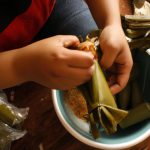
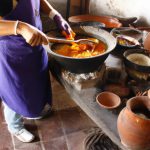

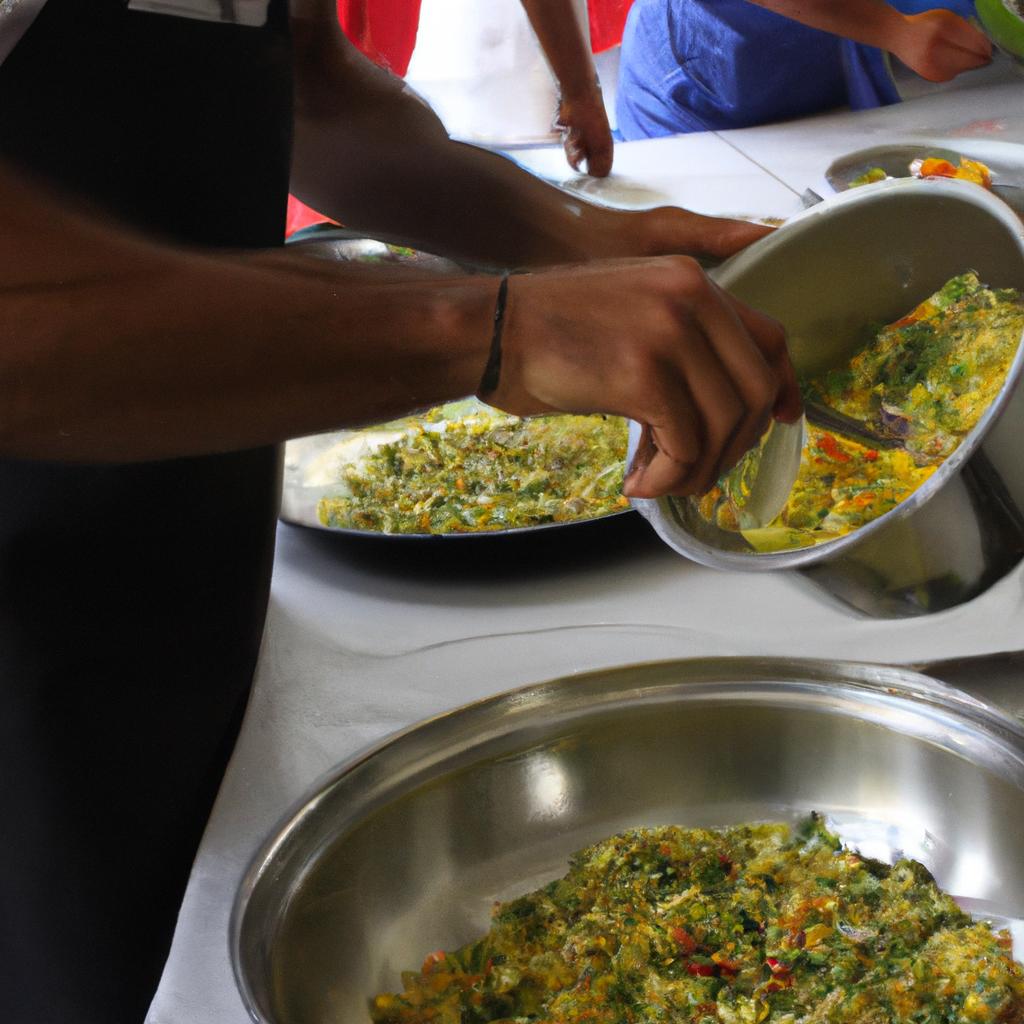


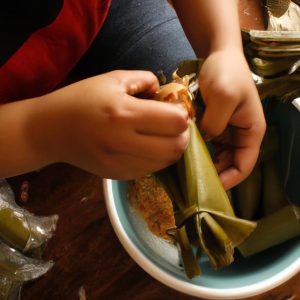
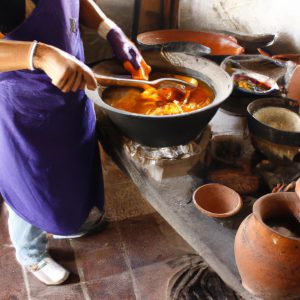
More Stories
Michoacan Cuisine: Regional Varieties of Mexican Food
Veracruzana Cuisine: Regional Varieties of Mexican Food
Tex-Mex: Regional Varieties of Mexican Food